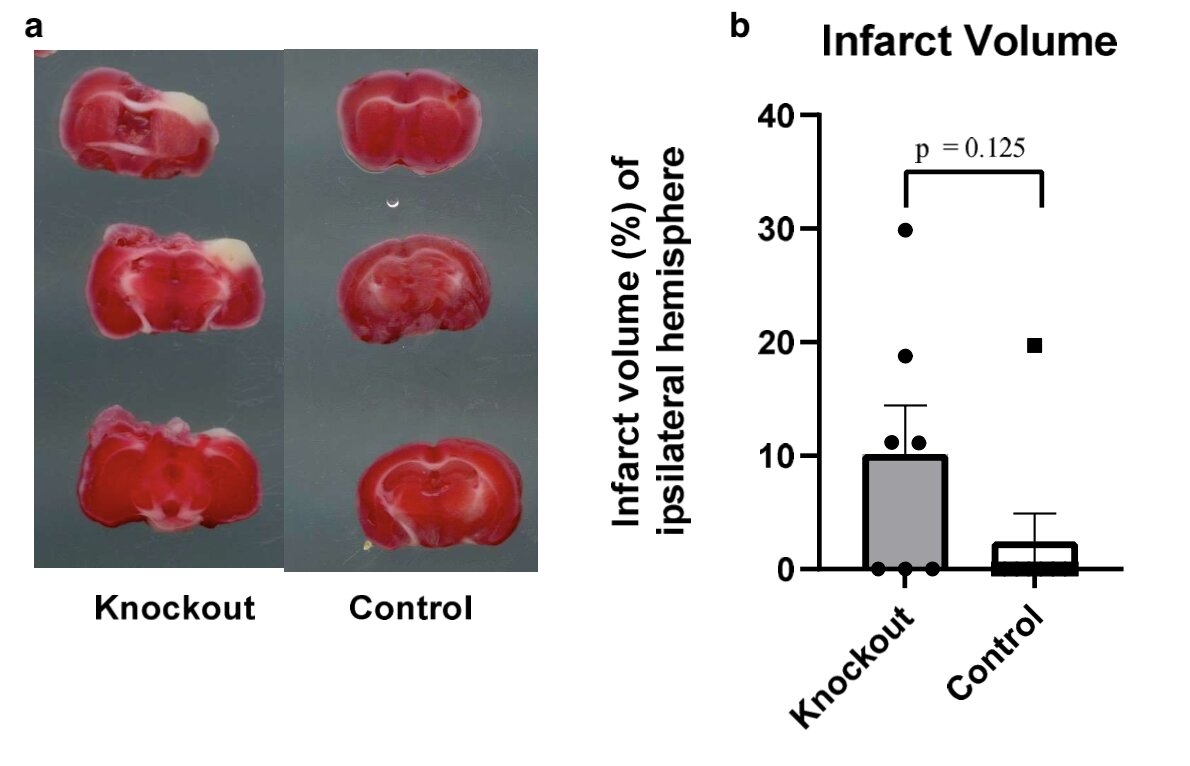The brain is the most active and highly metabolically demanding organ (1). Oxygen delivery is carried out through strictly controlled cerebral perfusion via local redistribution of blood flow under variations in neuronal activity. There is an intimate relationship between cerebral vasculature and neuronal tissue, where changes in local perfusion affect supplied cells and vice versa, glia and neurons influence adjacent blood flow (2). Anoctamin-1 (TMEM16A) belongs to the family of Ca2+-activated Cl– channels (3) and is suggested to act as a central regulator of neuromodulation. Tmem16A is activated by intracellular Ca2+ions, leading to Cl– influx and subsequent depolarization of smooth muscle cells (3). This enables an amplification loop for voltage-dependent Ca2+-influx and cerebrovascular contraction. This reinforces the idea of TMEM16A implication for ischemic stroke outcome. Ischemic Stroke is caused by a rapid loss of blood supply to a part of the brain due to thromboembolic occlusion in cerebral circulation (4). Understanding the mechanisms contributing to the harmful action of stroke reperfusion is of great importance for new treatment paradigms to improve stroke survival and outcome.
We aim to evaluate the importance of cerebrovascular TMEM16A for neuroprotection during ischemic stroke.
Procedures were performed according to the guidelines from Directive 2010/63/EU of the European Parliament on the protection of animals used for scientific purposes and approved by the Animal Experiments Inspectorate of the Danish Ministry of Environment and Food.
We used 3.5-6 months old, smooth-muscle-specific conditional TMEM16A knockout (KO) male mice. Mice expressed TMEM16A gene floxed around exon7 and Cre recombinase with estrogen receptor type 2 under control of smooth muscle myosin heavy chain promoter. Age-matched male mice expressing Cre only were used as a control. All mice were treated with tamoxifen injections to induce smooth-muscle-specific knockout. Cerebral blood flow was assessed with Laser Speckle Contrast Imaging. Ischemic stroke was induced with a transient middle cerebral artery occlusion (tMCAO) for 60 min in mice anesthetized with isoflurane. Stroke severity was analyzed with post-mortal 2,3,5â€triphenyltetrazolium (TTC) staining.
tMCAO reduced blood flow in the ipsilateral hemisphere for both KO (n=7-8) and controls (n=8;p<0.05; fig.1a), with TMEM16A KO mice having an attenuated flow reduction (< 80% compared to the controls ( p >0.01; fig.1a). No difference between KO and control mice in brain perfusion was observed 24 hours after reperfusion (p <0.05; fig.1a). When blood flow changes during MCA occlusion were analyzed in detail, a larger area of severe blood flow drop (<80%) was seen in TMEM16A KO mice over the occlusion period (p >0.01)(fig.1a). TTC staining suggested a larger infarct volume in KO (n=7) than in control mice (n=7-8; p=0.125; fig.2).
We found that smooth muscle-specific knockout of TMEM16A worsens ischemic stroke-reperfusion outcomes in mice. We suggest this occurs due to diminished cerebral blood flow control in TMEM16A knockout mice and their abnormal vascular tone. This proposes that under ischemic conditions, when there is an imbalance in ion concentrations, TMEM16A is an important component for vascular tone optimization. Our results indicate that TMEM16A may be a potential pharmacological target in improving stroke outcomes.


